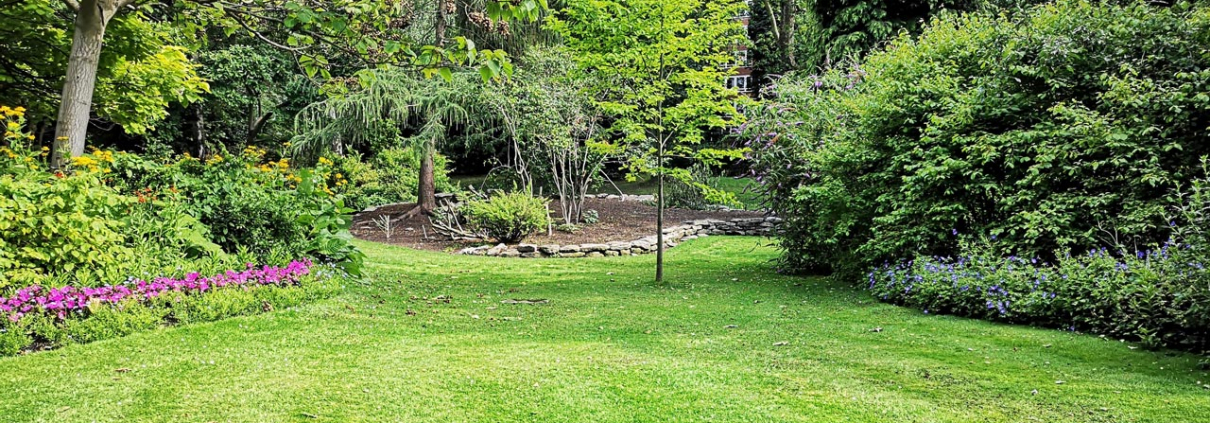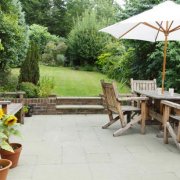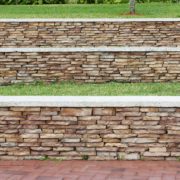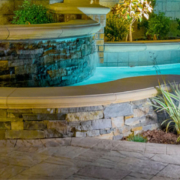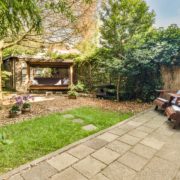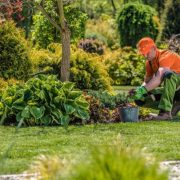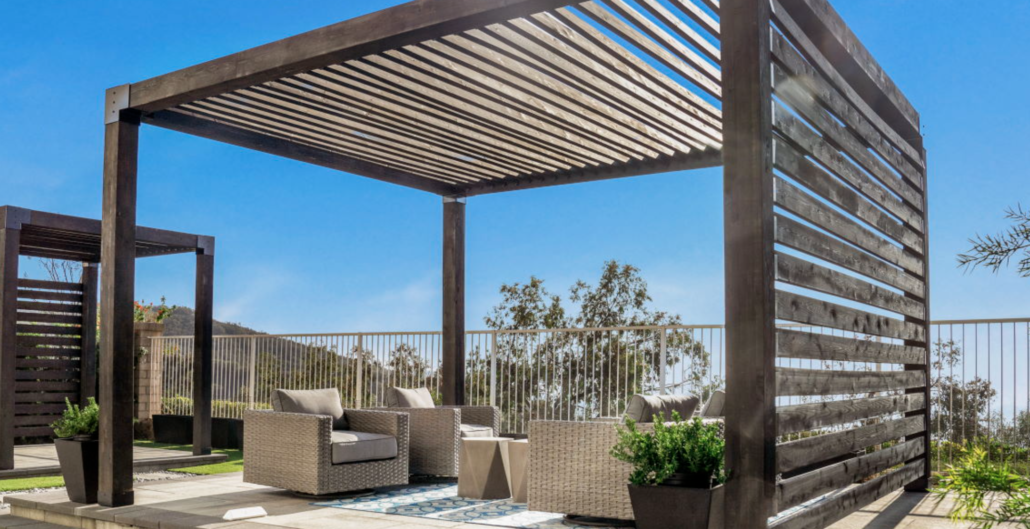Whether you’re hosting a backyard BBQ, watching the sunset, or enjoying some time outdoors, your backyard is a refreshing feature of your property. Over time, though, your backyard might need some renovation, which might lead to you looking for the best Orange County landscape contractors or hardscape contractors near you.
Beautification of your backyard is one of the best home renovation projects you can undertake. Lawns laid with sod are a common sight in many garden areas. Paved backyards not only improve the enjoyment of your outdoor space but boost the value of your home and, not insignificantly, save you money on landscaping maintenance expenditures. However, the decision process can be rather complicated with the different varieties of materials to use for this project.
If you’re thinking about paving your backyard, you’ll want to know which materials are best for you and your property and why. Continue reading below to learn more about 13 of the best materials you can use to pave your backyard and discover how West Hills Masonry can help you achieve the backyard of your dreams.
If you’re looking for a landscaping business in Orange County that can manage even the most difficult landscape requirements, West Hills Masonry has the skills and expertise to match your needs. Learn more below about our extensive landscaping services and why we are one of Orange County’s top landscape contractors.
12 of the Best Materials to Pave Your Backyard
Paving your backyard is a fantastic place to start if you want to make your property more pleasant and usable, and the advantages of paved backyards are gaining more and more attention. The process, however, can be complicated for some homeowners.
Check out our list of 13 of the best materials for some fantastic ideas for your usable space.
Flagstone
Flagstone backyards are unmistakable and difficult to resist if you like the earthy, ageless look of the material. Quarried flagstones are heavy and difficult to work with since they are irregularly shaped and proportioned, especially for the unskilled do-it-yourselfer. Because flagstone is prone to eroding and splitting, proper drainage is essential for a good flagstone or tumbled stone backyard design.
Flagstone comes in a variety of hues and stones, depending on the quarry and area where you live. It’s a popular choice for backyards and front entrances. The uneven shapes distinguish the massive, flat slabs of stone, which are usually 1 to 3 inches thick. When wet, flagstone has a somewhat roughened surface that provides excellent traction.
Many have names that reflect the location or color of the quarry, the geological classification, or the quarry itself, or they can be made up. Moss rock, for example, is a frequent term for a stone found in New Mexico. While stonemasons are aware that it is a form of sandstone, a quarry or dealer may sell it under a different name.
Flagstone’s hue and properties result from a slow and steady buildup of layers of sand, clay, mineral, and organic deposits throughout the natural process of formation. Red, blue, and buff are the most frequent colors, with regional variants like Arizona sandstone and Pennsylvania bluestone being among the most popular.
Brick
Brick has been manufactured for thousands of years by heating a mixture of clay and other materials in a kiln. It’s tough, long-lasting, and has a clean, classic aesthetic that complements a variety of landscape and architectural designs. Many dwellings are made of brick or a combination of brick and other materials.
Its versatility allows it to be used for backyard floors, walkways, walls, and edging. It works well with both formal and rustic landscape or hardscape components and different house designs. Different aesthetics can be achieved by using different brick bonding or patterns, such as herringbone, running bond, and jack-on-jack.
Clay brick is a tried-and-true backyard construction material with a distinct appearance that works well with traditional and contemporary design.
Bricks usually retain their rich, warm color over time, and because of their convenient weight and size, putting them in a backyard is a do-it-yourself project. Brick pavers can be laid easily on a dry bed of sand without the use of mortar.
Brick pavers’ adaptability appeals to homeowners since it can be arranged in a variety of patterns, ranging from rectangular to spherical. Reclaimed brick pavers have increased in favor as a result of their “green” status and unique appearance, despite the fact that it is often more expensive.
Pavers
Nothing compares to the beauty of a natural stone backyard. Depending on how you style it, it can be rustic or stylish. It’s also long-lasting and easy to match to your house’s decor.
The expense is a major disadvantage. Natural stone is mined, and you must pay to have the large slabs delivered to your home. The parts aren’t all the same size, which adds to the style, but it also means they’re not all the same thickness, and the ground beneath each piece must be individually carved out to the exact thickness of the piece in order to create an equitable floor.
Consider building a brick paver backyard in your yard for a traditional and modern appeal. Concrete pavers, often known as paving stones or patio pavers, can be laid in a variety of patterns to create one-of-a-kind backyard designs. Concrete pavers, patio pavers, and interlocking pavers are typically formed of concrete, and they come in a wide material of shapes and colors.
Natural stone, concrete, clay, and even recycled plastics are all used to make concrete pavers and patio pavers. Experts prefer stone or concrete backyard pavers and patio pavers for backyard installations because they are likely to last longer and have less color fading than other paver kinds due to their increased density.
Concrete pavers, or patio pavers, in particular, are a popular choice for backyard construction due to their ease of installation and wide range of sizes, shapes, and colors. Although some concrete pavers and interlocking pavers are created to look like natural stone or clay brick, this synthetic product invariably lends itself to a less “natural” aesthetic.
Concrete
Concrete is an excellent alternative for bespoke yard designs since it can be poured in rectangular or irregular patterns. A concrete backyard, for example, may be used as a surrounding landscape to your circular pool.
Concrete is a low-cost, easy-to-work-with material for your backyard construction. Because poured concrete is easy to shape, it may be molded into a variety of shapes and styles to make it more distinctive. The material is sturdy and long-lasting, and when placed properly, it will last for years.
However, because concrete is porous, you must avoid allowing water to penetrate it. If it freezes, it will expand, perhaps causing concrete fissures. Painting a sealer over the concrete to prevent it from sucking in water in the first place is a straightforward solution. Every few years, this will have to be reapplied.
Stamped concrete is available in a variety of colors and surface textures, as well as items that mimic natural stone or other materials. You may even make your own patterns, shapes, and designs to give your backyard a distinctive appearance.
Concrete backyards are often among the most affordable to construct. They are also one of the most durable, assuming good installation and upkeep. However, concrete, like brick, is susceptible to freeze-thaw cracking.
Because poured concrete may take any shape, there are virtually endless backyard design possibilities. A concrete slab is a way to go if your dream backyard is covered in glazed decorative tiles since it will provide a sturdy, even base on which to lay tiles in the future.
Gravel
Some homeowners prefer to use loose materials in their backyards rather than laying down a firm floor. Gravel is one of the most popular materials for this type of yard design. Homeowners who prefer DIY projects will welcome the fact that a gravel backyard is generally a do-it-yourself effort.
Gravel is an excellent choice for backyard material that can be put in fast and easily. River rock and crushed stone are the two most common types (in sizes ranging from a quarter-inch to one inch in diameter). When used over landscaping fabric, Gravel significantly inhibits weed development and provides superior drainage as compared to other materials.
Gravel comes in a variety of sizes and shapes, ranging from little round pebbles (known as pea gravel) to bigger rough-edged stones. Pea gravel is gentler to walk on, but it shifts a lot, making it difficult to keep your backyard furniture level. Larger gravel retains its shape better, but it is harsh on bare feet.
Gravel backyards are reminiscent of English cottage gardens and Tuscan courtyards at their best. However, keep in mind that a gravel backyard is high-maintenance, with stones that are difficult to maintain the level and in place. Some people also claim that walking on gravel with bare feet is uncomfortable and that other materials give better support for outdoor furniture.
Tile
Unglazed ceramic tile is preferred for a backyard floor, with glazed ornamental tile reserved for edges and accents. Glazed tile has a smooth sheen, which can make it slippery and dangerous when wet. Sealers, coatings, and enhancers protect the outdoor tile from stains, wear, and moisture while preserving or enhancing its natural color.
For backyard surfaces, there are three types of unglazed tile:
Porcelain
These tiles are stain-resistant and durable because they are fired at a high temperature.
Terracotta
A rustic-looking material that is permeable and best suited to moderate regions.
Quarry
Textured tiles with just enough unevenness to provide traction.
Cut Stone
Cut stone, often known as stone tile, is flagstone pavers cut into square or rectangular shapes. Cut stone is utilized for more formal applications than uneven flagstone because of its geometric form and placement. Smooth faces and square edges allow it to be set in even rows or spread apart, with a ground cover or loose material filling in the gaps.
Belgian blocks are sometimes known as cobblestones or stone blocks. Cobbles are typically utilized as edging for other materials such as brick, granite, or flagstone pavers in tiny sections.
Loose Materials
Loose materials, often considered a choice just for side yards or tiny areas, are rising in popularity for backyard surfaces, especially in drought-stricken areas. Why? Homeowners and residents are replacing parched lawns with water-saving alternatives like loose materials. They’re also simple to work with and reasonably priced.
One way you could create your own loose material mix is by rummaging through your storage spaces to find relevant items. There are chances that you could make do with old tiles that you may have had, say, in your tool shed or storage. If you use your creativity and improvise on your own, you could even use up spare pool tiles to create unique designs. That is, of course, if you have or had a pool at some point. You could whip up some intricate designs with some bright, broken bits of tiles, coupled with gravel and smooth pebbles, or have designs made for you by a professional in the field.
You could also use a polymeric sand paver base because of its accessibility and spreadability, and it is also one of the most popular choices. Sand, on the other hand, is not an ideal base in and of itself. Sand shifts with time, resulting in an uneven foundation. Your concrete pavers will show if your foundation isn’t even close to level.
For added durability, and is frequently used with crushed stone. Because sand is available in a variety of fineness and coarseness, not all varieties are suitable for paver bases. Washed concrete sand is the ideal base sand for concrete pavers or patio pavers, according to the Interlocking Concrete Pavement Institute.
Concrete sand, commonly referred to as bedding sand, is gritty and does not hold moisture beneath the paver surface. This allows concrete pavers to drain after a hard storm while still maintaining structural integrity.
Crushed Stone
A crushed stone paver base is made up of small stone fragments that have been fractured and inspected for consistency. Limestone, dolomite, granite, and trap rock are some of the most common rock types processed into crushed stone. Stone aggregate comes in a range of sizes, but most experts prefer 3/4-inch gravel for paver bases.
Crushed stone is an excellent paver basis because it drains well and is simple to work with. Crushed stone, like sand, comes in a variety of shapes and sizes. Quarry-processed dense grade aggregate is the ideal material for paver bases.
Furthermore, quarry processing produces a 3/4-inch crushed stone and stone dust mixture. This blend is one of the greatest materials for maximum strength and cohesion since it bonds effectively and boosts durability.
Natural Stone
If you enjoy the aesthetic of bricks or concrete pavers or interlocking pavers but prefer a more natural aspect for your yard, a stone backyard is a good option. Natural rock paving materials such as bluestone and flagstone can be spread in bright, eye-catching patterns.
Natural paving stones may outlast their man-made equivalents in terms of durability. The stones, unlike concrete blocks, will not fade over time.
However, the irregular size and shape of these stones can make installation difficult. As a result, natural stone is frequently one of the most costly backyard materials.
Recycled Concrete Aggregate (RCA)
Recycled concrete aggregate (RCA) is an environmentally friendly crushed stone alternative. Before being broken up and sold, crushed stone is mined as “virgin aggregate.” Existing concrete is broken down into gravel to create RCA.
The RCA method produces less carbon and uses less energy than mining virgin aggregate, making it a more environmentally friendly solution. Though RCA has a similar purpose to crushed stone in a paver base, it is impossible to tell which rock combinations are there.
When compared to crushed stone, this volatility may make RCA a less trustworthy base choice. If you’re interested in an RCA paver base, inquire about the quality of the paving materials used to guarantee that your project proceeds successfully.
Stone Dust
Stone dust is a sand-like powder that is made out of finely powdered stones. Though it can be a useful basis element when combined with other paving materials, most experts advise against using stone dust as a base on its own.
Stone dust and finely powdered stone, referred to as “screenings,” belong to a material group known as fines because it contains excessive dust particles. The particles hold a lot of water and hinder the base layer from draining properly.
This water storage jeopardizes a base’s ability to bear and distribute loads. Choose a base material that is a little more durable to keep your concrete pavers secure and prevent them from shifting.
Get Professional Help with Your Backyard with West Hills Masonry
The material you select to pave your backyard should be one that suits your needs and overall vision for your property. If it doesn’t meet your goals, even the cheapest backyard material won’t help you much.
When preparing to renovate your backyard or outdoor living room, decide what you want to achieve with your backyard space, then examine your budget to see how much you can afford to spend. Afterward, contact a team of concrete pavers you can trust to get the job done right.
At West Hills Masonry, you can count on us to transform your ideas into reality and leave you with an outdoor space that is elegant, magnificent, and functional. By complementing your landscape with magnificent hardscape features, such as a paved backyard, our knowledgeable and skillful team of contractors go to every length to add tremendous value to your home.
Are you looking to update your outdoor space and realize all of your hardscape fantasies with a paved backyard? Contact West Hills Masonry today to receive a free estimate and speak with an expert member of our paver team about how we can help you.

